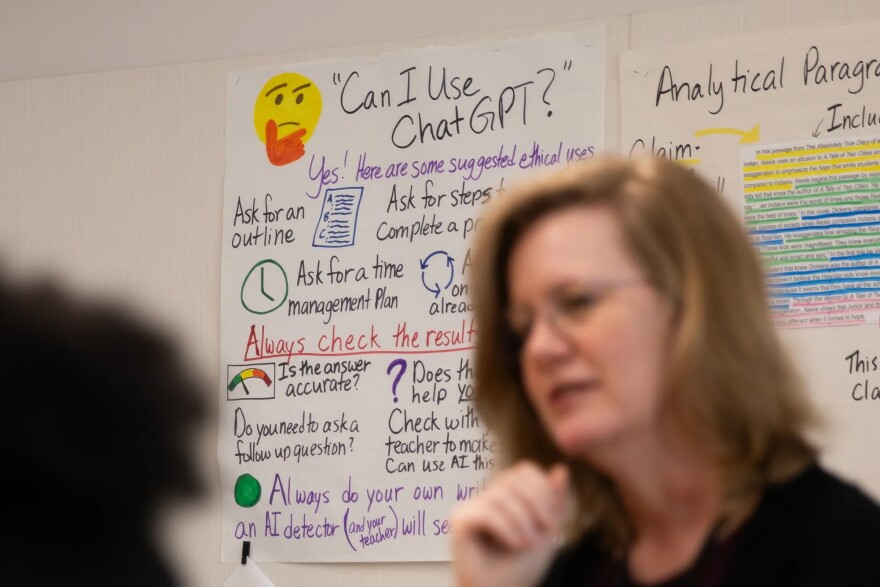Science teachers employ three distinct approaches to AI integration in science education: using AI as a digital tool, as an inquiry practice partner, and as an epistemic system.
Objective: The main goal of this study was to analyze the approaches science teachers take to integrate task-specific AIs into science instructions based on what they learned through professional development experiences.
Methods: The study was conducted in the context of a professional development program called "Hi AI" in Seoul, South Korea, between September 2021 and February 2022. The researchers analyzed Peer Teaching Videos (PTVs) created by six teachers (four elementary and two middle school science teachers) as the final learning outcomes of their PD program. These 15-20 minute videos showcased the teachers' AI-integrated science instruction methodologies. Data collection also included post-program surveys and follow-up interviews with selected teachers and the program instructor. The researchers employed a constant comparative data analysis approach with three phases of open, axial, and selective coding to identify themes and categorize teacher approaches.
Key Findings:
- The researchers identified three distinct approaches teachers used to engage students with AI in science classrooms:
- Trying out AI as a digital tool - This approach focused on providing accessible hands-on experiences with AI technologies, helping students develop basic AI literacy. Teachers introduced various AI applications like image identifiers and sound mixers regardless of specific science content.
- Training and testing AI as an inquiry practice partner - This approach had students train and test AI models using science-related data to support scientific inquiry practices, particularly classification activities. Some teachers used pre-existing datasets while others had students generate their own data through science activities.
- Exploring AI as an epistemic system - This approach positioned AI and science as comparable knowledge-generating systems, encouraging students to analyze how each system develops and utilizes knowledge. Teachers facilitated comparative discussions on topics like the concept of data and reliability across both domains.
- These approaches were not mutually exclusive, with some teachers employing multiple approaches.
- The approaches demonstrated a progression in complexity, from basic tool-based applications to more sophisticated epistemic engagements.
Implications: The findings provide instructional implications for integrating AI beyond its technological utility, promoting critical understanding of epistemic processes in both science and AI. Although the study predated the widespread adoption of generative AI, the identified approaches remain relevant and can inform current AI integration efforts. The research suggests professional development programs should equip teachers not only with technical AI skills but also pedagogical strategies that position AI as a lens for examining the nature of science and addressing ethical implications of AI-driven decision-making.
Limitations: The study has several limitations, including the timing of data collection (September 2021-February 2022), which predated the public use of generative AI. The AI tools employed were task-specific rather than generative. Additionally, the small sample size of six teachers from one region of South Korea limits the generalizability of the findings. A focus on real-world problems, considered a desirable integrative approach, was not explicitly displayed in the teachers' demonstrated instructions.
Future Directions: The researchers suggest several areas for future research:
- Developing and diversifying instructional resources beyond classification activities to support teachers in integrating AI with other science practices
- Further exploration of the "Explore AI as an Epistemic System" approach, particularly in teaching about the epistemic nature of science
- Investigating how the three approaches can be applied to the integration of generative AI in science classrooms
- Exploring approaches focused on real-world problem-solving
- Examining how teachers can address the ethical implications related to AI's epistemic processes, such as biases in data and algorithmic decision-making
Title and Authors: "Science Teachers' Approaches to Artificial Intelligence Integrated Science Teaching" by Won Jung Kim and Arif Rachmatullah.
Published On: February 3, 2025 (accepted); March 19, 2025 (published online)
Published By: Research in Science Education (Springer Nature)
The study makes a significant contribution to understanding how science teachers conceptualize and implement AI integration in their classrooms. It highlights that effective AI integration progresses beyond merely using AI as a technological tool to deeper engagements that leverage AI as a partner in scientific inquiry and as a system for critical examination of knowledge production. The research emphasizes that the responsibility for successful AI integration should not fall solely on teachers but requires support from policy makers, district and school leaders, researchers, and teacher educators. The authors hope their findings provide empirical evidence and practical examples to guide collective efforts in navigating the shift toward integrating AI in education.
